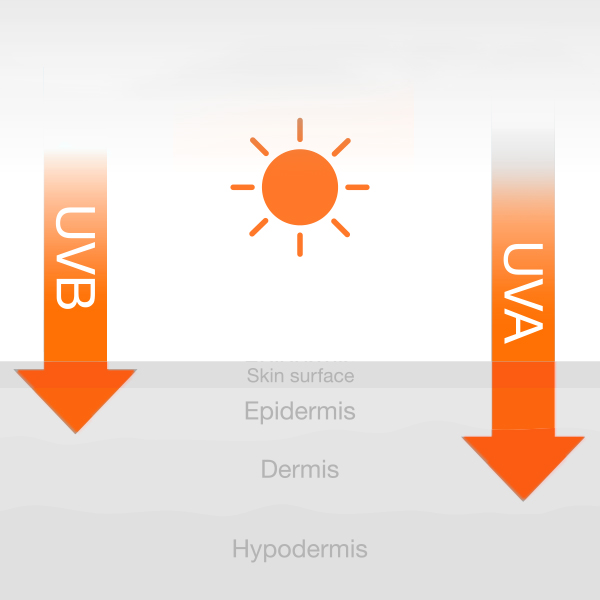
How to Prevent Mask Acne
Although wearing a mask can help keep you and others safe in the COVID 19 pandemic, wearing a face mask

Sunlight consists of many different types of rays, with the most harmful being Ultraviolet (UV) rays. When UV light interacts with the skin, it generates highly reactive free radicals that can cause damage to the skin cells. The more damage they cause, the greater the chance of developing wrinkles and other illnesses like skin cancer. There are two types of basic UV rays that reach the earth’s surface: UVA and UVB. UVA is responsible for skin damage and premature aging, and UVB provides the energy your skin needs for vitamin D production but is also responsible for sunburns.
The amount of UV light the skin is exposed to, depends on factors like the time of day, the season and your geographical location. The degree of damage from UV rays depends on their intensity and the length of time your skin has been exposed without protection. Although UVA and UVB damage can be severe, you can greatly reduce the risks by taking steps to protect your skin.
The most effective means of UVA and UVB protection is to reduce your skin’s exposure to UV light altogether by avoiding being in direct sunlight, especially between the hours of 10am and 4pm when the sun’s rays are the strongest. You can also reduce sun exposure by wearing clothes like long-sleeved shirts, long pants or skirts, hats and sunglasses. If your skin is going to be exposed to direct sunlight, wearing sunscreen is essential. Try use sunscreens with broad spectrum protection against both UVA and UVB rays, and a sun protection factor (SPF) of 30 or higher as these provide the best protection against the sun.

Although wearing a mask can help keep you and others safe in the COVID 19 pandemic, wearing a face mask

SPF stands for sun protection factor and is a measure of how long a sunscreen will protect your skin

Your skin is protected by a barrier, known as the hydrolipidic film, which consists of water, sebum and lipids.

Sunlight consists of many different types of rays, with the most harmful being Ultraviolet (UV) rays. When UV light interacts

The key to good skin is knowing your skin type and finding the right products that work for you. There

IQ. Dermatologist Developed
Developed For the south African Climate.
SIGN UP FOR OUR IQ NEWSLETTER
VAT number: 4420228506
Copyright © 2021 2022. IQ Skintelligence. All rights reserved.
Email: advice@iqskin.co.za
IQ HELPLINE: 080 000 6901






IQ. Dermatologist Developed
Developed For the south African Climate.
SIGN UP FOR OUR IQ NEWSLETTER
Email: advice@iqskin.co.za
IQ HELPLINE: 080 000 6901





VAT number: 4420228506
Copyright © 2021 2022. IQ Skintelligence. All rights reserved.
Sign up today to get exclusive offers & news on new product launches
Please read our privacy and cookie notices to understand how we use your personal data.
Sign up today to get exclusive offers & news on new product launches
Please read our privacy and cookie notices to understand how we use your personal data.